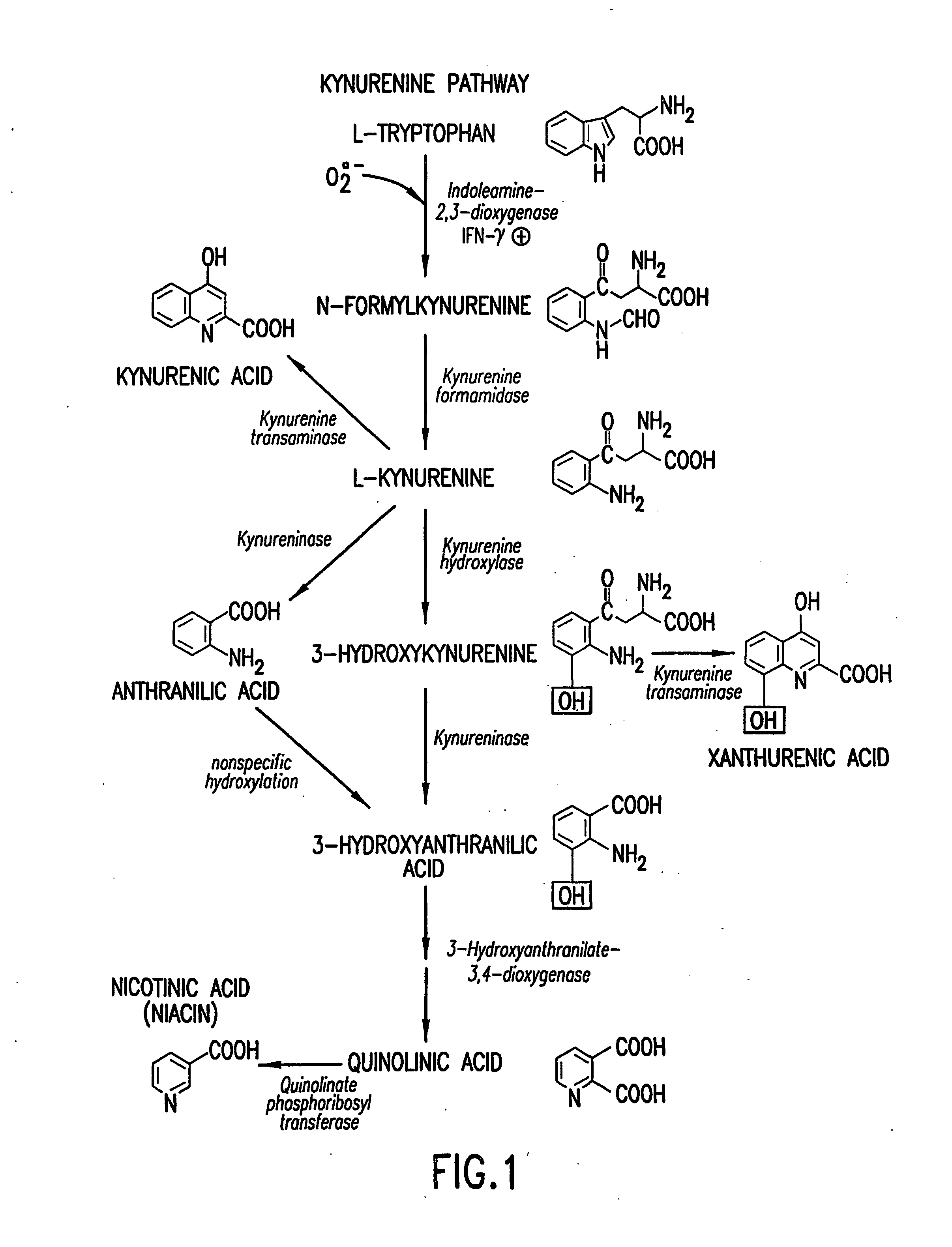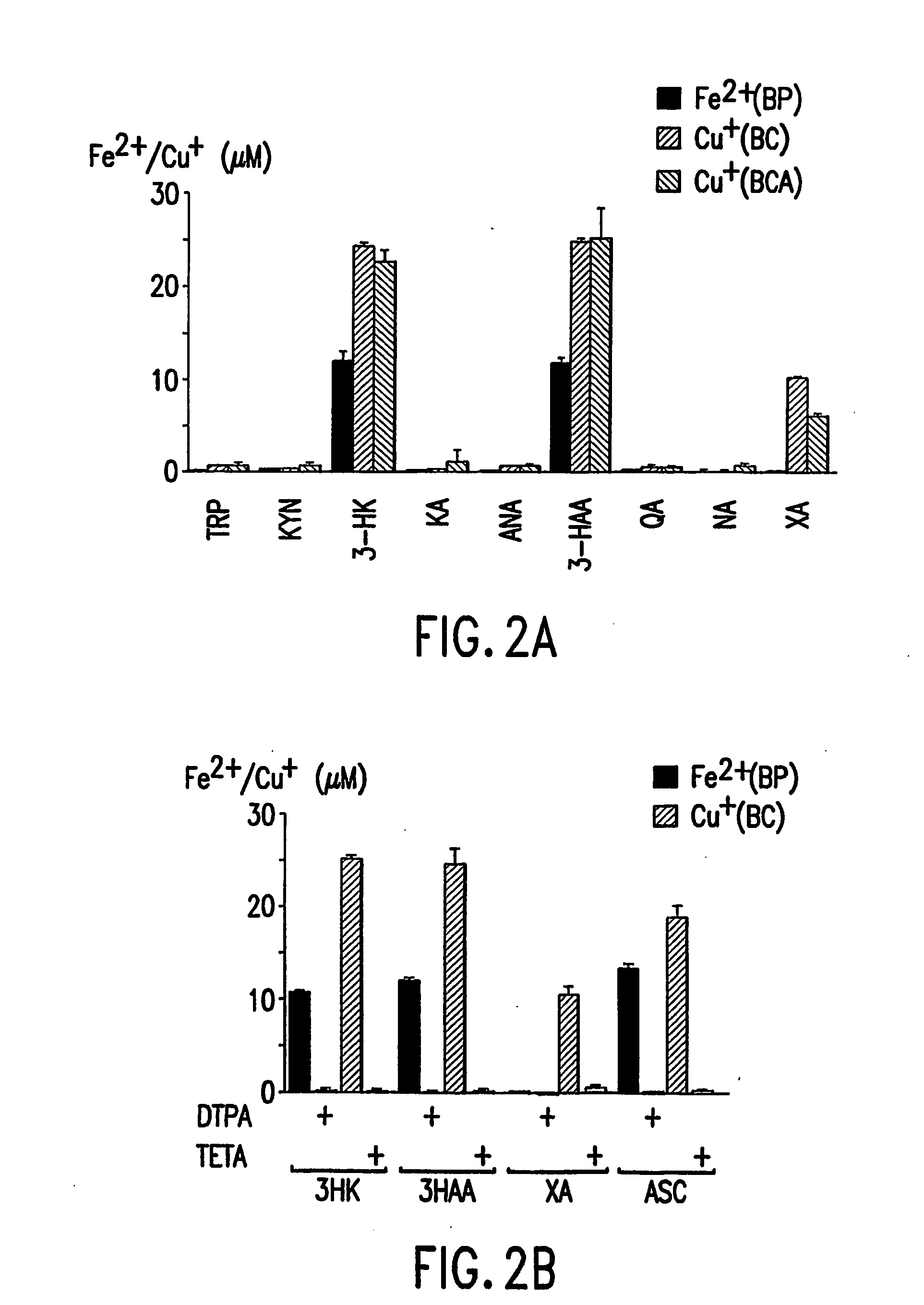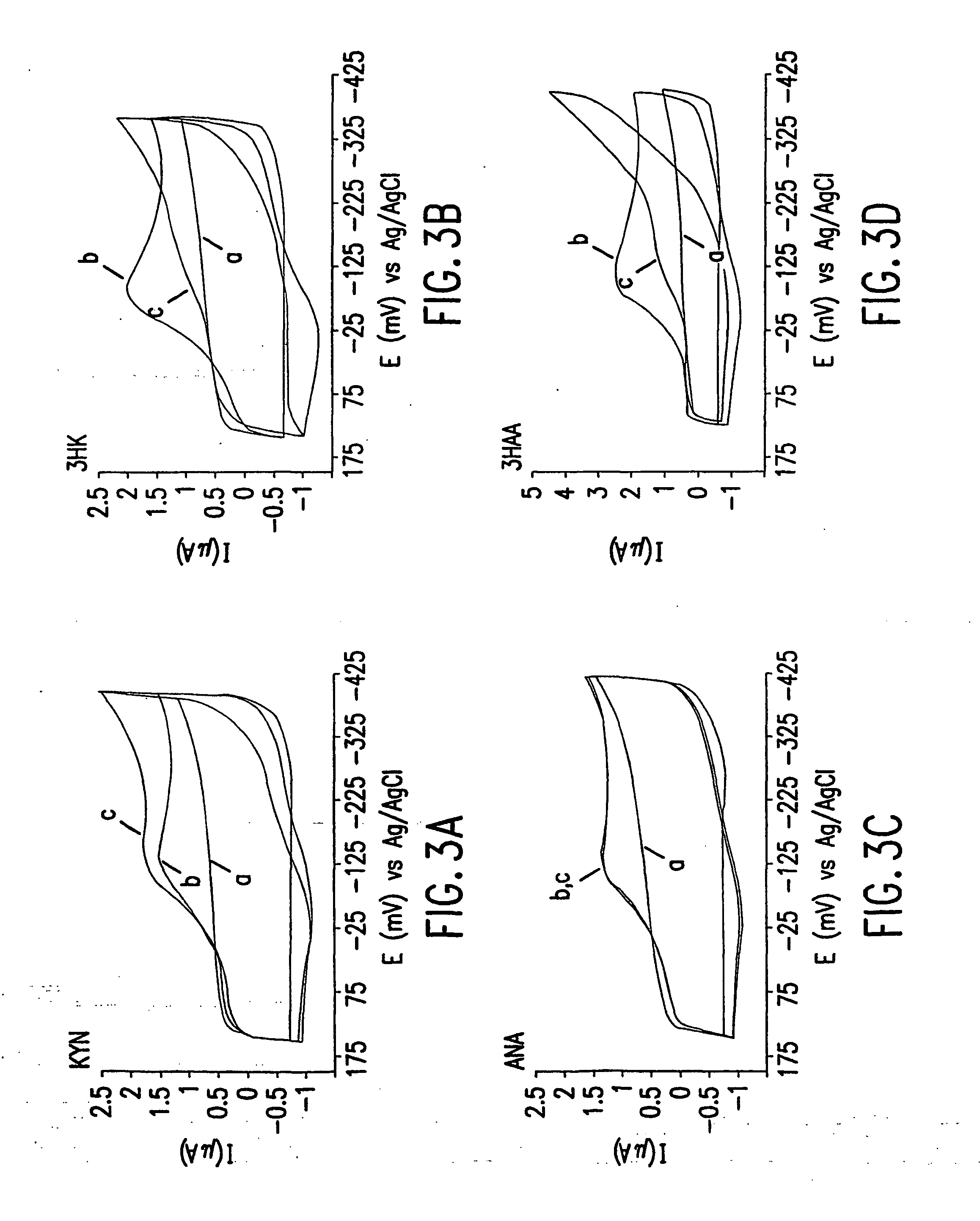Method for the identification of agents that inhibit or promote cataracts and uses thereof
a technology of agent and cataract, applied in the field of method for identifying agents that inhibit or promote cataracts, can solve the problems of no more conservative or less expensive therapeutic alternatives, many patients throughout the world do not have access to surgical treatment for this disorder, and free radical species which are known to be toxic to most cells in living tissue, including the eye, and achieve the effect of promoting cataracts in a mammal
- Summary
- Abstract
- Description
- Claims
- Application Information
AI Technical Summary
Benefits of technology
Problems solved by technology
Method used
Image
Examples
example 1
[0116] Metal Reduction Assays—Assays were performed using a 96-well microtiter plate (Costar, MA). Test compounds from the kynurenine pathway (10 μM) or, as a positive control, ascorbic acid (ASC, 10 μM) were co-incubated with either Fe(III)-citrate (25 μM) and the Fe(II) indicator bathophenanthroline disulfonic acid (BP, 250 μM), or Cu(II)-glycine (25 μM) and the Cu(I) indicator bathocuproine disulfonic acid (BC) or bicinchoninic acid (BCA, 250 μM). Incubations were conducted in PBS, pH 7.4, at 37° C. in the dark for one hour. Absorbencies were then measured using a plate reader (SPECTRAmax Plus, Molecular Devices, CA) at the appropriate wavelengths: Fe(II)-BP complex at 535 nm (the known molar absorption coefficient, M535,=22140 M−1 cm−1), Cu(I)-BC complex at 483 nm, M483=12250 M−1cm−1), or Cu(I)-BCA complex at 562 nm, M562=7700 M−1cm−1). In control samples, absorbance from the metal ion and indicator in the absence of test compound and the absorbance of test compound in the prese...
example 2
[0118] Cyclic Voltammetry—Cyclic voltammetry was performed at room temperature (22±2° C.) on ambient solutions using an EG&G PAR potentiostat, Model 273. The potentiostat was operated in Ramp Mode, generating a potential staircase waveform with a 0.25 mV step height. The potential window of +0.15 to −0.4V, in which Cu(I) is electroactive, but the metabolites are not, was scanned in both directions at a rate of 100 mV / sec. The current response was passed through a 5.3 Hz low pass filter. A minimum of three cycles were collected for each scan, ensuring the stability of the electrochemical response. The electrochemical cell consisted of an indium / tin oxide working electrode (Delta Technologies) with an active area of 0.32 cm2, a platinum wire auxiliary electrode, and a Ag / AgCl (1 M KCl) reference electrode (Microelectrodes Inc.). Both the auxiliary and reference electrodes were positioned in the cell in close proximity to the working electrode. The working electrodes were pretreated wi...
example 3
[0121] Hydrogen Peroxide Assay—The fluorometric assay for hydrogen peroxide is based on the dichlorofluorescein diacetate (DCF) method (Molecular Probes, Eugene, Oreg.). The DCF solution (5 mM) in 100% ethanol was deacetylated in the presence of 0.01 M NaOH for 30 minutes and neutralized. Horseradish peroxidase (200 U / ml) was then added and the DCF concentration adjusted to 200 μM in PBS. The reaction solutions were carried out in PBS, pH 7.4, in a 96-well format plate (total volume=300 μL / well) and contained a test compound (KYN, 3-HK, 3-HAA, ANA, or ASC, each at 10 μM), deacetylated DCF (20 μM), and Cu(II)-glycine (1 μM) as indicated, incubated at 37° C. for 60 minutes. Reactions were conducted in the dark to avoid photodynamic effects. Abolition of the reading by co-incubation with catalase (1000 U / ml) was used for establishing H2O2 specificity. The fluorescent readings were recorded by a Packard FluoroCount™ fluorescent plate reader with a 485 nm excitation filter and 530 nm emi...
PUM
 Login to View More
Login to View More Abstract
Description
Claims
Application Information
 Login to View More
Login to View More - R&D
- Intellectual Property
- Life Sciences
- Materials
- Tech Scout
- Unparalleled Data Quality
- Higher Quality Content
- 60% Fewer Hallucinations
Browse by: Latest US Patents, China's latest patents, Technical Efficacy Thesaurus, Application Domain, Technology Topic, Popular Technical Reports.
© 2025 PatSnap. All rights reserved.Legal|Privacy policy|Modern Slavery Act Transparency Statement|Sitemap|About US| Contact US: help@patsnap.com



